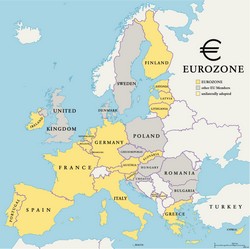Novel models and tools to minimise risk and ensure stability in the euro area
In this context of economic uncertainty, the EU-funded SYRTO(opens in new window) (Systemic risk tomography: Signals, measurements, transmission channels, and policy interventions) project aimed to determine the risks of the financial system, develop an early warning system (EWS) for systemic risks, and make recommendations to prevent and manage such risks. Work began with an examination of sector-specific risks within the financial system by identifying and understanding the major risk sources for sovereigns, banks and other financial intermediaries (BFIs) and corporations. Using these findings as a basis, the SYRTO team analysed the financial system in terms of an entity that needs to be monitored closely in order to identify the main risk indications and provide the right prevention and intervention measures. Project partners set up an EWS for sovereigns, BFIs and industry in the form of an interactive web-based platform. It provides a comprehensive risk analysis for countries and individual sectors, and identifies potential threats to financial stability. Drawing on a wide body of academic research, researchers delivered a report to measure, manage and prevent systemic risk. It introduces policy challenges regarding governance and coordination of systemic risk. The challenges are then addressed in sections that deal extensively with prevention, mitigation and stabilisation. The report tackles the triggers outside and inside financial institutions, and how to detect them early on, as well as the transmission of systemic shocks across the financial system. It also discusses lessons learned in stabilising the European banking sector. Recommendations were made on how to improve the governance and coordination of policies aimed at the prevention and transmission of systemic risk, as well as the stabilisation of the financial system after a crisis. SYRTO contributed to the knowledge of systemic risks and their impacts on financial stability in the EU. It will ultimately help to prevent, manage and resolve systemic crises in the euro area. Financially liberalised economies in Europe stand to benefit from stable financial conditions.







